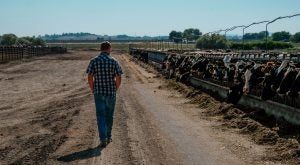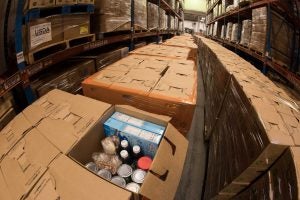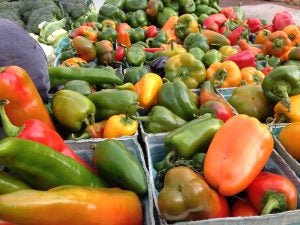Every human has a basic right to dignified and respectful access to food that is healthful and culturally appropriate. But that isn’t the case for every human — or even every American — and it certainly was not the case the past couple of years in the midst of global pandemic, severe weather events, and the outbreak of war in Ukraine. But these events didn’t necessarily make new problems in food access, they simply put a spotlight on the existing ones.
And this isn’t a “poor people” problem, this is an everybody problem.
According to Feeding America, 35 million people reported food insecurity in 2019, 45 million in 2020, and is projecting 42 million people will report food insecurity when the data for 2021 is finalized. There is a myriad of reasons that this could have been happening, including transportation, income, and location.
If everyone who could shop locally for food would decide to so, producers would be better able to plan for appropriate inventory during the season. For most food producers, the growing season ranges from early spring to late fall. This gives them a respite in the winter and time to plan for the spring. Bolstering local production of food affords more accessibility and, in some cases, leads to less pollution from transporting food items long distances.
» Related: In defense of the American food system
Even in my region of Eastern Washington, a large agricultural production area, the bulk of foods that are found in supermarkets and restaurants (chain restaurants, in particular) come at least from Western Washington, but they can come from as far as Florida. This doesn’t even account for food brought in from outside of the United States. Local food systems are vulnerable to disruption if, for example, there is an avalanche on Snoqualmie Pass on Interstate 90, the main route used to cross Washington state. Not to mention that the majority of food produced in agricultural regions is exported out of the area. In the Palouse region of Washington State, for example, where much of the regions grains and legumes are produced, the Spokane Food Policy Council reports that as much as 85 percent of those harvests leave the region.
I believe that allowing local food to stay local can bridge a huge gap in food access.

Each winter farm activities begin to slow, relatively speaking, and farmers and ranchers take the time to map out what the coming growing or breeding season is going to look like. Just like any other businessperson, they take into account previous seasons’ activities, successes, and failures. These plans account for a certain amount of flexibility, but not enough flexibility to adjust to the repercussions of something like a global pandemic. The effects of this magnitude were felt almost instantly. Food and other supplies began flying off the shelves in supermarkets, farmer’s markets were reasonably well attended because they are largely held outdoors, and whole communities turned to their small, local farmers.
The food systems were extremely stressed when it became apparent that local producers were not going to have the supply to satisfy that demand.
But the ebb in well-populated areas didn’t match the flow of more rural regions with high production. The pandemic forced producers to pivot due to many challenges, such as transportation and labor availability. Some were able to reroute their harvests to food access organizations to fulfill orders for the U.S. Department of Agriculture’s Farmers to Families Food Box Program, which put together emergency food boxes for local communities, and other programs like it. But other operations, without contracts with grocery stores and restaurants, were forced to plough back into their soil, dump, or otherwise destroy perfectly good food with no financial return. Meanwhile, millions of people were facing severe food insecurity.
There are just a few large corporations that own the bulk of many corners of the food industry, like beef and dairy. Bolstering local producers when there are large supply chain disruptions prevents a whole industry from tanking and people will still have access to those food items locally.

The USDA is taking big steps to subsidize production operations and other supportive operations like food processing and transportation companies. Transportation and distribution companies had many of the same problems that agricultural producers faced: labor being a key one. Restaurants were closing down and so supply runs were canceled. So what’s the solution? I think many of these issues can be managed by buying from local producers.
Many of them, yes, but no solution is perfect. The cost of buying local can be more expensive and cost is a major roadblock for many households. One reaction to the start of the pandemic was to grow your own backyard victory garden like households did during the 20th century world wars and the Depression. Even items to start your own garden can be challenging to buy. The USDA’s Supplemental Nutrition Assistance Program can help. Along with staple food items like produce, poultry, and other meat products, and dairy, SNAP benefits allow for the purchase of plant starts and seeds for plants that will produce food for the household. But there are other roadblocks:
- Gardening and hardware stores that often have the best selection of plant starts don’t accept SNAP benefits.
- It doesn’t matter what you are allowed to purchase with SNAP benefits if transportation is still a barrier to access.
Certainly, the hope is that with SNAP benefits offsetting food costs, there is more funds available to access transportation, whatever that looks like for the individual household (car, public transportation, etc.). Check out the list of possible purchases with SNAP benefits here.

So what? What are we going to do? The USDA recognizes that the current food system isn’t working and has a plan. One part of the plan includes making food more geographically accessible through adding locations that sell food, mobile markets, and more in order to bolster local food producing operations. The goal is to make the local food system beneficial to the consumer and the smaller, local producers. They are also putting an emphasis on equity:
“Emphasizing equity: For too long, rural communities, underserved communities, communities that experience persistent poverty, and the people who live there have been left behind. Where you live should not determine a fair shot to economic opportunity. It is in these communities where most of our food comes from; where most of the water that we drink comes from; and where most of the energy we consume comes from. USDA’s Food System Transformation investments will create more economic opportunities for these communities and allow them to retain more of the food system dollar. This will speed the transition to more equitable growth, with the wealth created from these communities remaining in small towns and underserved communities, helping to lift them out of poverty.”
At the end of the day it’s up to us. Keeping food dollars local allows local producers to plan accordingly. When there’s enough food, access becomes less of an ordeal. But there’s still a lot to do. Not every farmer can accept SNAP benefits as payment. Government applications can be a bit involved, but think of it as one more outlet for your product in addition to being a public service. Check out this website to find out how you can start to accept SNAP benefits as payment.
The moral of the story here is that keeping food local and making is accessible to everyone will bolster food security. There’s no perfect solution, there’s not one single thing that will work in every community, the only thing we can do is start looking to our local food systems for sustenance. Keeping our food dollars local will make it so during a crisis we are less dependent on vital systems that are liable to fail us.
So build relationships with your local farmers and ranchers, go see where your food comes from, and keep food local.
Brianna Scott is a veteran farmer who lives in Eastern Washington while earning her Master’s of Science in Agriculture from Washington State University. She is active in the veteran ag community and raises poultry and livestock while growing a large market garden.



